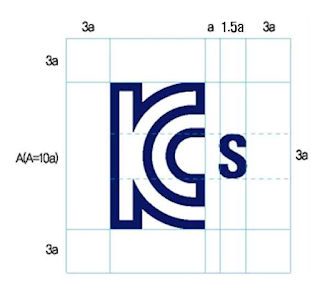1. Which documents, laws do I need to begin with?
You can find the requirements in Framework Act on National Standards, Enforcement Ordinance, Article 15-7, particularly the first requirement says "National Certification Mark shall follow the criteria and the method specified in Appendix 6. So what requirements are there in Appendix 6? Let us take a look today.
2. Requirements on shape & size
The shape of KCs mark shall be in accordance with the Appendix 6 as explained above. First of all, the KC mark is required to have height and length as per the ratio in the grid scale on the left figure above. Then the subjoinder 's' is required to have size proportional to KC mark as specified on the right figure above.
Within the specified shape, the size could be adjusted, but the height cannot be less than 5 mm with an exception for small equipment. KCs mark shall be visible all the time, and it can be printed, laser-marked, itched, engraved etc.
3. Requirements on color
What about color? Usually the color shall be Navy (5PB 2/8). The appendix 6 says, when special effects required, you could also use Gold (10YR 6/4), Silver (N 7) or Black (N 2).
4. What else?
When it is impossible to have KCs mark on your products (e.g too small to mark anything), you could have KCs mark on the package of the products, instead. This also applies if the nature of your product prevents users/buyers from further distributing the products.
Now I bet you have a better understanding on how to mark KCs. Still got questions? please leave comments on the bottom of the post or send an email (koreamarketaccess@gmail.com)



















